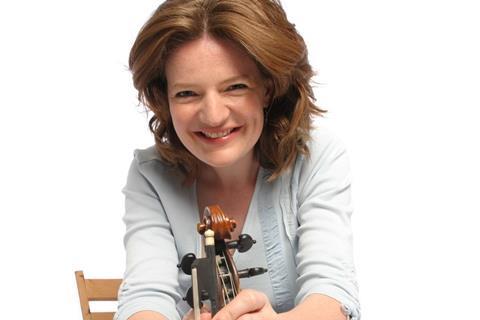The Baroque musician reveals the most important elements of her practice routine

1. Plan your practice according to how you feel
If you’ve been travelling and carrying a lot of bags so feel weak or tired, you’ll have to build up slowly during your next practice session. If you’ve had a run of a routine of practice, you should be able to start at a slightly faster pace and work from there.
2. Warm-up
I warm up for 20 minutes to half an hour, depending on how much time I have. Play scales, arpeggios and double-stops in the key(s) of the repertoire you’re working on at the moment. Then play a study. When you’re playing Baroque repertoire you’re usually in the primary keys – there aren’t many pieces in F sharp minor, for instance. I choose studies that take me into more ‘outlandish’ keys.
3. Improvise
Improvisation and ornamentation go hand in hand. In Baroque music it’s vital to know the harmony and bass line, and to be able to improvise within a set progression of chords – a little bit like a jazz musician. Sometimes during my warm up I choose a popular ground bass from the time, for instance the one used by Biber in his Passacaglia, or a Chaconne. I’ll play the bass line, then continue the line in my head while improvising on top. It frees you up – it takes you away from the music and lets your mind and fingers wander. It can give you new ideas and it’s very liberating.
4. Adapt your intonation to each key
True intonation is vital. In Baroque repertoire, tempered intonation within the key is especially important: pure 3rds, narrow 5ths, pure leading notes and so on, depending on the harmony of the piece you’re playing.
5. Practise from the score
Baroque repertoire is all based on harmony. If you understand the harmony, you will shape the phrase in the right way. Sometimes with a sonata continuo I play the bass line and think through my part. It helps me to see the direction and emphasis in the phrase, and where the strengths are, depending on dissonance and consonance. I spend a lot of time in Bach’s fast movements playing the chords of the harmony and seeing what the harmonic rhythm is, how many events there are in the phrase and how much movement there is in the harmony. That then dictates what I pinpoint in each phrase.
6. Be your own teacher
Make sure that your musical intentions become a reality. Have a musical idea in your head and remain detached enough from your playing to listen critically, assess it and check that it matches your musical intentions.
7. Build stamina
It’s important to build stamina practice into your session. Play through the whole of the piece you’re learning as well as practising individual passages, so that you get used to going from one movement to the next. Sometimes I pretend I’m playing to an audience and perform a piece the whole way through without stopping, like a dress rehearsal – even if I don’t have a concert that day. It’s very useful.
This is an edited extract of a longer interview with Rachel Podger from the June 2014 issue of The Strad
Interview by Pauline Harding








































No comments yet